60 Soal dan Jawaban TKA Bahasa Inggris Kelas 9 SMP/MTs Ujian Akhir Untuk ke Jenjang SMA
Pembelajaran ini akan memberikan pengalaman dan gambaran untuk meningkatkan kemampuan diri.
TRIBUNPONTIANAK.CO.ID - Sebanyak 60 soal latihan dalam melaksanakan Tes Kompetensi Akademik (TKA) kelas 9 SMP/MTS tahun ini.
Pembelajaran ini akan memberikan pengalaman dan gambaran untuk meningkatkan kemampuan diri.
Untuk itu, soal latihan ini penting sekali untuk dipelajari, setiap soal sudah dilengkapi dengan kunci jawaban sebagai panduan belajar.
Pastikan setiap soal disimak dan dipelajari secara berulang dengan akses yang mudah secara online dari HP/PC.
Maka dari itu ikuti seluruh soal dengan seksama sebagai latihan.
Baca juga: 40 Soal dan Jawaban TKA Bahasa Indonesia Kelas 9 SMP/MTs, Hasil Nilai ke Jenjang SMA
SOAL TKA Bahasa Inggris Kelas 9 SMP/MTs
1. A 22-year-old man develops sudden weakness in both legs after a viral infection. Neurological examination shows absent deep tendon reflexes, flaccid paralysis, and preserved sensation. Cerebrospinal fluid analysis reveals elevated protein with normal cell count (albuminocytologic dissociation).
What is the most likely diagnosis?
A. Multiple sclerosis
B. Myasthenia gravis
C. Guillain-Barré syndrome
D. Amyotrophic lateral sclerosis
E. Poliomyelitis
Answer: C
2. During a health policy debate, policymakers are considering mandatory labeling of packaged foods to include calorie counts and sugar content. The intention is to encourage healthier consumer choices and reduce obesity prevalence.
Which principle of public health ethics is most relevant to justify this intervention?
A. Beneficence
B. Non-maleficence
C. Justice
D. Autonomy
E. Utility
Answer: A
3. In a clinical case, a 52-year-old man presents with persistent hypertension that does not improve despite lifestyle modifications and regular exercise. He reports a family history of cardiovascular disease and his BMI indicates overweight status.
What is the most appropriate initial pharmacological management for this patient?
A. Lifestyle modifications only
B. Thiazide diuretics
C. Beta-blockers as first-line therapy
D. Calcium channel blockers
E. High-dose statins immediately
Answer: B
4. A 68-year-old woman comes with complaints of frequent urination, excessive thirst, and unexplained weight loss over the last two months. Laboratory results show elevated fasting blood glucose at 180 mg/dL.
Which diagnostic test provides the strongest confirmation for the diagnosis?
A. Random blood glucose measurement
B. Oral glucose tolerance test (OGTT)
C. HbA1c test ≥ 6.5 persen
D. Fasting blood glucose on a single occasion
E. Urinalysis for glucose presence
Answer: C
5. In the past two decades, communication has transformed drastically. Social media has enabled people to connect instantly, share knowledge, and build communities across borders. However, it also creates problems such as misinformation, cyberbullying, and decreased face-to-face interaction.
What should students do according to the lecturer?
A. Use it as frequently as possible to share information
B. Avoid it completely to prevent misinformation
C. Focus only on the benefits and ignore the risks
D. Analyze both positive and negative impacts before deciding
E. Consider it as the best tool for education without limitations
Answer: D
6. A researcher is studying the effects of nutrition on childhood obesity in a primary school population. He collects data on BMI, dietary habits, and physical activity levels. The study design involves following the same children for five years.
What type of research design is most appropriate to classify this study?
A. Cross-sectional study
B. Case-control study
C. Randomized controlled trial
D. Cohort study
E. Meta-analysis
Answer: D
7. A 36-year-old woman presents with double vision that worsens with fatigue and improves with rest. Physical examination reveals ptosis and weakness in extraocular muscles.
Which receptor is targeted by autoantibodies in this disorder?
A. Dopamine receptor
B. Nicotinic acetylcholine receptor
C. Muscarinic acetylcholine receptor
D. GABA receptor
E. Serotonin receptor
Answer: B
8. A 50-year-old man presents with progressive weakness and muscle wasting in both upper and lower limbs, accompanied by fasciculations. Sensory functions remain intact.
Which motor neurons are affected in this condition?
A. Only upper motor neurons
B. Only lower motor neurons
C. Both upper and lower motor neurons
D. Cerebellar neurons
E. Sensory neurons
Answer: C
9. Many environmental scientists argue that the effects of climate change are not limited to rising global temperatures, but also include extreme weather events such as hurricanes, floods, and droughts...
What is the main idea being emphasized?
A. International agreements have no impact on climate change
B. Climate change only increases global temperature
C. Developing countries suffer the most from climate change
D. Economic growth and environmental sustainability often conflict
E. Hurricanes and floods are unrelated to climate change
Answer: D
10. Last week, Maria said, “I am preparing my research presentation for the international conference.”
Which of the following sentences is correct in reported speech?
A. Maria said she prepares her research presentation
B. Maria said she was preparing her research presentation
C. Maria said she had prepared her research presentation
D. Maria said she is preparing her research presentation
E. Maria said she has prepared her research presentation
Answer: B
11. A 30-year-old female presents with recurrent episodes of unilateral throbbing headache associated with nausea, vomiting, and photophobia.
Which neurotransmitter imbalance plays a central role in the pathophysiology of this disorder?
A. Dopamine
B. Acetylcholine
C. Serotonin
D. GABA
E. Glutamate
Answer: C
12. A 65-year-old patient has difficulty understanding spoken language but can speak fluently, although the words often lack meaning.
Which area is most likely affected?
A. Broca’s area
B. Wernicke’s area
C. Angular gyrus
D. Prefrontal cortex
E. Supplementary motor area
Answer: B
13. A 40-year-old man presents with sudden, severe, “thunderclap” headache described as the worst headache of his life. CT scan shows no abnormalities.
What is the next best diagnostic step?
A. MRI of the brain
B. Lumbar puncture
C. Carotid Doppler ultrasound
D. Electroencephalogram
E. Cerebral angiography
Answer: B
14. Despite the importance of renewable energy, many governments don’t invest enough funds, which leads to slow progress in combating climate change.
Which of the following options makes the sentence grammatically correct?
A. Many governments doesn’t invest enough funds
B. Many governments don’t invests enough funds
C. Many governments doesn’t invests enough funds
D. Many governments don’t invest enough funds
E. Many governments didn’t invest enough funds
Answer: D
15. A 58-year-old male with a history of uncontrolled hypertension suddenly collapses and becomes unresponsive. CT scan reveals a massive intracerebral hemorrhage.
Which brain structure is most commonly affected in hypertensive hemorrhages?
A. Cerebellum
B. Basal ganglia
C. Medulla oblongata
D. Thalamus
E. Occipital lobe
Answer: B
16. By the time the new library was officially opened, students had already borrowed digital resources provided by the school’s online system.
What is the main emphasis of this passage?
A. Students no longer need a library for learning
B. Online resources are increasingly utilized before physical facilities
C. Libraries remain the only reliable source of knowledge
D. Digital resources are less effective than printed books
E. Students are reluctant to adapt to technology
Answer: B
17. In a neurology ward, a patient presents with sudden weakness on the left side of the body, slurred speech, and facial drooping.
Which artery is most likely occluded in this clinical scenario?
A. Middle cerebral artery
B. Anterior cerebral artery
C. Basilar artery
D. Posterior communicating artery
E. Vertebral artery
Answer: A
18. A 64-year-old patient has spastic paralysis, hyperreflexia, and a positive Babinski sign on the right side.
Which of the following locations is most likely involved?
A. Anterior horn of spinal cord
B. Cerebral cortex
C. Neuromuscular junction
D. Peripheral nerves
E. Muscle fibers
Answer: B
19. A patient is diagnosed with Parkinson’s disease after showing symptoms of resting tremor, bradykinesia, and rigidity.
Which specific brain region is primarily affected?
A. Substantia nigra pars compacta
B. Hippocampus
C. Amygdala
D. Subthalamic nucleus
E. Caudate nucleus
Answer: A
20. A public health officer is evaluating the effectiveness of a vaccination program against measles in a rural community.
Which epidemiological measure is most suitable to determine the program’s success?
A. Case fatality rate
B. Prevalence rate
C. Incidence rate
D. Mortality rate
E. Relative risk
Answer: C
21. The synonym of “happy” is …
A. sad
B. glad
C. angry
D. afraid
Answerd: B
22. The antonym of “difficult” is …
A. easy
B. hard
C. strong
D. weak
Answerd: A
23. Yesterday, my father … me to the hospital because I was sick.
A. take
B. took
C. taken
D. taking
Answerd: B
24. Which sentence is correct?
A. She don’t like coffee.
B. She doesn’t like coffee.
C. She not like coffee.
D. She didn’t likes coffee.
Answerd: B
25. I usually go to school … bike.
A. on
B. in
C. by
D. at
Answerd: C
26. My brother … football every Sunday.
A. play
B. plays
C. playing
D. played
Answerd: B
27. She … a beautiful song at the concert last night.
A. sing
B. sings
C. sang
D. singing
Answerd: C
28. If it … tomorrow, we will stay at home.
A. rain
B. rains
C. raining
D. rained
Answerd: B
29. They have lived in Pontianak … 2018.
A. since
B. for
C. in
D. at
Answerd: A
30. Look! The students … in the library.
A. is reading
B. are reading
C. were reading
D. read
Answerd: B
31. A: “Where is your mother?”
B: “She … in the kitchen.”
A. is
B. are
C. was
D. were
Answerd: A
32. “My cat is … than yours.”
A. fat
B. fatter
C. fattest
D. more fat
Answerd: B
33. The passive form of “They clean the classroom every day” is …
A. The classroom cleans every day.
B. The classroom is cleaned every day.
C. The classroom was cleaned every day.
D. The classroom cleaned every day.
Answerd: B
34. Dina: “What are you doing?”
Rina: “I … TV.”
A. watch
B. watches
C. am watching
D. watched
Answerd: C
35. Choose the correct expression for offering help:
A. What about you?
B. May I help you?
C. Do you like it?
D. I am fine.
Answerd: B
36. What time … the train arrive?
A. do
B. does
C. did
D. done
Answerd: B
37. We were very tired … we continued walking.
A. but
B. and
C. or
D. so
Answerd: A
38. Rina: “Could you help me carry this book?”
Sinta: “…”
A. Yes, of course.
B. No, I don’t.
C. Yes, I am.
D. No, she can’t.
Answerd: A
39. The text on medicine labels usually contains …
A. Ingredients and usage
B. Story and characters
C. Plot and setting
D. Introduction and conclusion
Answerd: A
40. The correct order is …
A. Beautiful is the girl.
B. The girl beautiful is.
C. The beautiful girl is.
D. The girl is beautiful.
Answerd: D
41. She … already finished her homework.
A. has
B. have
C. had
D. having
Answerd: A
42. They are … a new house near the park.
A. build
B. building
C. built
D. builds
Answerd: B
43. The sun … in the east.
A. rise
B. rises
C. risen
D. rising
Answerd: B
44. Which one is an expression of congratulation?
A. I’m sorry to hear that.
B. Congratulations on your success!
C. Would you like some help?
D. See you later.
Answerd: B
45. If I were you, I … study harder.
A. will
B. would
C. can
D. must
Answerd: B
46. The text in a recipe usually shows …
A. Materials and steps
B. Story and plot
C. Dialogue and expression
D. Character and setting
Answerd: A
47. The comparative form of “beautiful” is …
A. more beautiful
B. beautifuller
C. most beautiful
D. beautifulest
Answerd: A
48. They … watching a movie when I came.
A. is
B. are
C. were
D. was
Answerd: C
49. “Let’s … basketball this afternoon.”
A. play
B. plays
C. playing
D. played
Answerd: A
50. What is the correct closing of a formal letter?
A. Dear Sir,
B. Best regards,
C. Hello,
D. How are you?
Answerd: B
51. “The books … on the table.”
A. is
B. are
C. was
D. has
Answerd: B
52. The opposite of “cheap” is …
A. expensive
B. cheapness
C. money
D. small
Answerd: A
53. Yesterday, they … to the museum together.
A. goes
B. going
C. gone
D. went
Answerd: D
54. I prefer tea … coffee.
A. than
B. from
C. to
D. for
Answerd: C
55. Which one is a greeting expression?
A. How are you?
B. Thank you.
C. See you tomorrow.
D. Congratulations.
Answerd: A
56. “The homework … by the students yesterday.”
A. is done
B. was done
C. were done
D. did
Answerd: B
57. My uncle … in Jakarta since 2015.
A. live
B. lives
C. lived
D. has lived
Answerd: D
58. “Don’t … too late at night.”
A. sleep
B. sleeps
C. sleeping
D. slept
Answerd: A
59. Which expression shows asking for permission?
A. May I borrow your pen?
B. How do you do?
C. I am fine, thanks.
D. Good morning.
Answerd: A
60. The plural of “child” is …
A. childs
B. childrens
C. children
D. childes
Answerd: C
- Baca Berita Terbaru Lainnya di GOOGLE NEWS
- Dapatkan Berita Viral Via Saluran WhatsApp
!!!Membaca Bagi Pikiran Seperti Olahraga Bagi Tubuh!!!
Meaningful
soal dan jawaban
60 Soal dan Jawaban TKA Bahasa Inggris Kelas 9
Ujian Akhir Untuk ke Jenjang SMA
TKA Bahasa Inggris Kelas 9
soal dan jawaban TKA
Eksklusif Pontianak
| 50 Soal Ujian Sekolah PJOK Kelas 12 SMA SMK MA Terbaru Lengkap Kunci Jawaban Soal USBN Tahun 2026 |
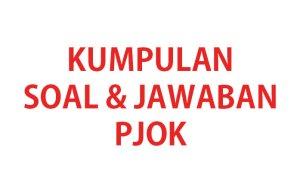
|
|---|
| 40 Soal dan Jawaban TKA Bahasa Indonesia Kelas 9 SMP/MTs, Hasil Nilai ke Jenjang SMA |
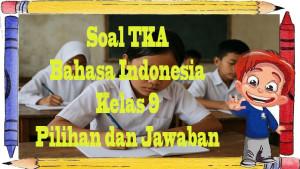
|
|---|
| 120 Notaris Jadi Objek Pemerikasaan MPDN Kota Pontianak, Jaga Kualitas dan Integritas Profesi |
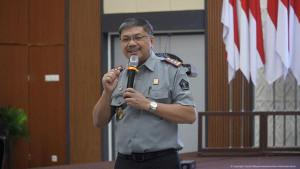
|
|---|
| Bank Kalbar Sabet Penghargaan Bergengsi dari The Iconomics! Bukti Nyata Dedikasi dan Pelayanan Prima |

|
|---|
| 40 SOAL dan Jawaban IPA Tes TKA Kelas 9 SMP/MTs Ujian Sekolah Akhir, Hasil ke Jenjang SMA |
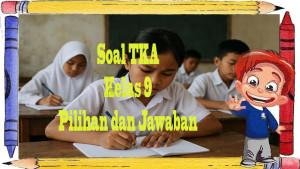
|
|---|

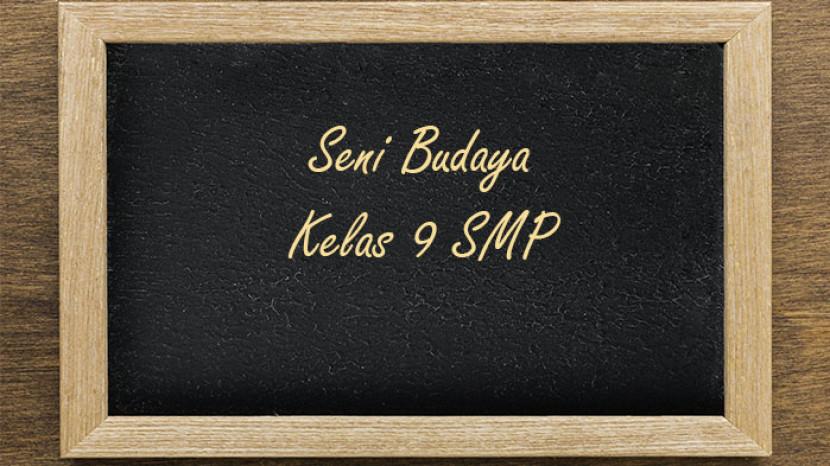

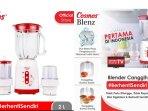



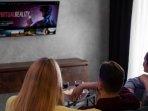

![[FULL] Puja-Puji Trump ke Prabowo, Pakar: Indonesia Ukir Sejarah Jadi Bagian Perdamaian Timur Tengah](https://img.youtube.com/vi/fJn8tji_3J8/mqdefault.jpg)
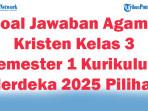

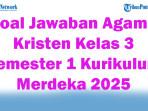
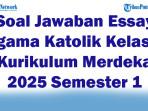
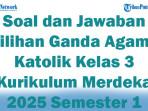
Isi komentar sepenuhnya adalah tanggung jawab pengguna dan diatur dalam UU ITE.